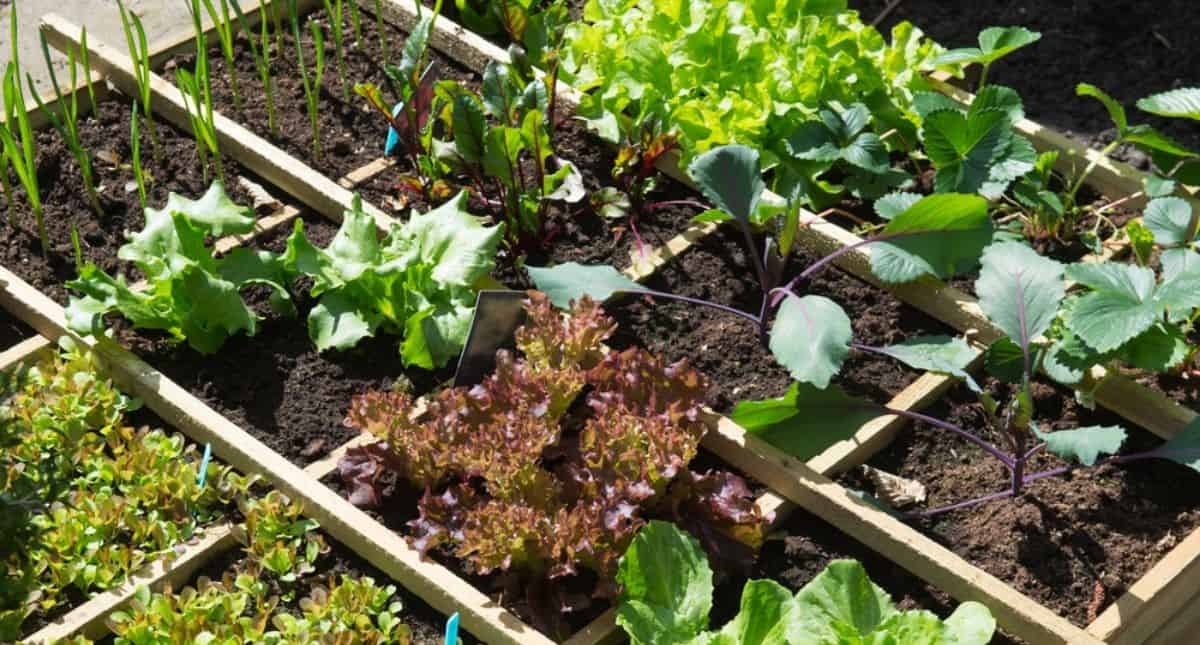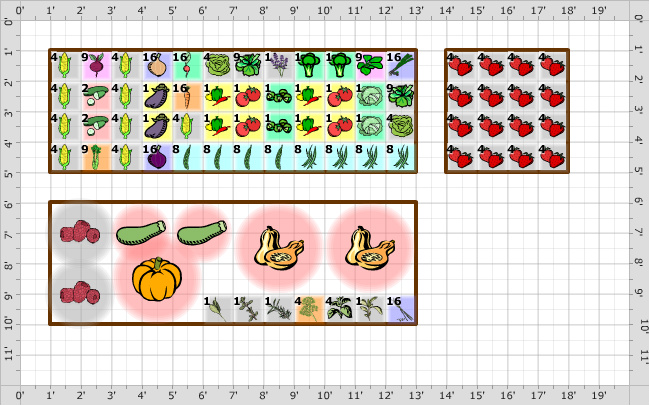

This makes it easier to visualize your garden. Features like color fill help to delineate and define different plant types. Use rows and columns to create your garden to scale. For example, you may want a double-or triple-wide row for larger, bushier plants like tomatoes or you might choose to fit two closer rows of a small root crop like carrots or beets in a single one-foot-wide row. Remember that you can, if you choose, make rows of different widths.Be sure to leave spaces for aisles between rows-this will ensure an accurate diagram and one that makes sure you can really fit all of the plants you assign.Use an X or another mark to indicate how many individual plants of each type you’d like to plant. Now, keeping in mind the considerations discussed earlier, start assigning row space for each plant.Count the squares and sketch out the perimeters of your garden.Next, refer back to those measurements you took for the length and width of your garden.Plant spacing is often given in increments of 6 to 12 inches, so one foot per square makes good sense. Decide how big each square will be and what distance each will represent. Here’s a simple way to design a garden layout using graph paper: Plus…isn’t it just nice to be “unplugged” sometimes while you’re out and about enjoying nature?
#PRINTABLE SQUARE FOOT GARDEN PLANNER UPGRADE#
You also won’t need to worry about losing your precious plans and journal notes when you upgrade to a new device (though certainly, cloud storage is making this less of a concern than it used to be). Notebooks require no electricity, data, or Wi-Fi connections, are highly portable, and do not require you to risk costly electronics while working in your garden. You’ll find this feature very handy, making it easy to look back at past configurations and notes to see what did and didn’t work in your design or to help plan crop rotations. It’s cheap and portable, will serve you many seasons, and will act as a journal from one season to another. Best soil locations for specific crops-for example, is the depth and tilth of one location more favorable for certain crops like carrots or other root crops? Is one spot stonier, meaning that a large plant with deep roots (i.e., broccoli, tomatoes, corn) would be more suited rather than root crops that would be deformed and stunted by such soil?Īn inexpensive graph paper notebook makes a great garden layout planner that will also work as a journal and a record of past gardens.Ī simple graph paper notebook is a wonderful tool for planning your vegetable garden.Companion planting issues-may include researched, planned companion planting but also may include beneficial or symbiotic planting arrangements.Will plants require support such as staking or fencing? Do you plan to trellis any vegetables?.Plant growth type/habit-Bushy? Trailing? Vining? Low? High?.How wide do you need your aisles to accommodate any equipment you may use during the growing season (for example-will you use a rototiller for weed control and cultivation? Or a mower between rows or beds?) Mulching paper or fabric?.How far apart your rows should be-how much aisle space is needed (this may be different for different plants).Ideal plant spacing for all your different types of plants.

No matter which of the following methods or resources you decide to use, there are some key pieces of information you’ll need to know. Use this chart as a square foot spacing guide.This garden is a blank slate ready for a good plan and some plants!

Need Help? Plan your garden in minutes with our custom garden planning service here Square Foot Gardening Layout Chartīelow is a square foot garden layout chart of popular plants and their optimal planting spacing. Square Foot Gardening Layout Custom Garden Planning Tool See the planting placement example below.

Next, plants are then sown or transplanted into each 1×1 square in multiples of 1, 2, 4, 9 or 16 depending on the crop. The example below we divided up the 4′ X 8′ raised bed, into 32 garden squares with string. This can be done by drawing lines with a rake, or using stings are guides. Let’s get startedįirst, Divide your garden into 1 foot squares. I have been using the square foot method for years to achieve a hight yields. You can use the square foot gardening layout guide below to achieve a beautiful garden. Using the square foot gardening layout takes all the guess work out of plant placement. Using a square foot gardening layout is critical if you want to grow a large amount of food in a small amount of space.


 0 kommentar(er)
0 kommentar(er)
